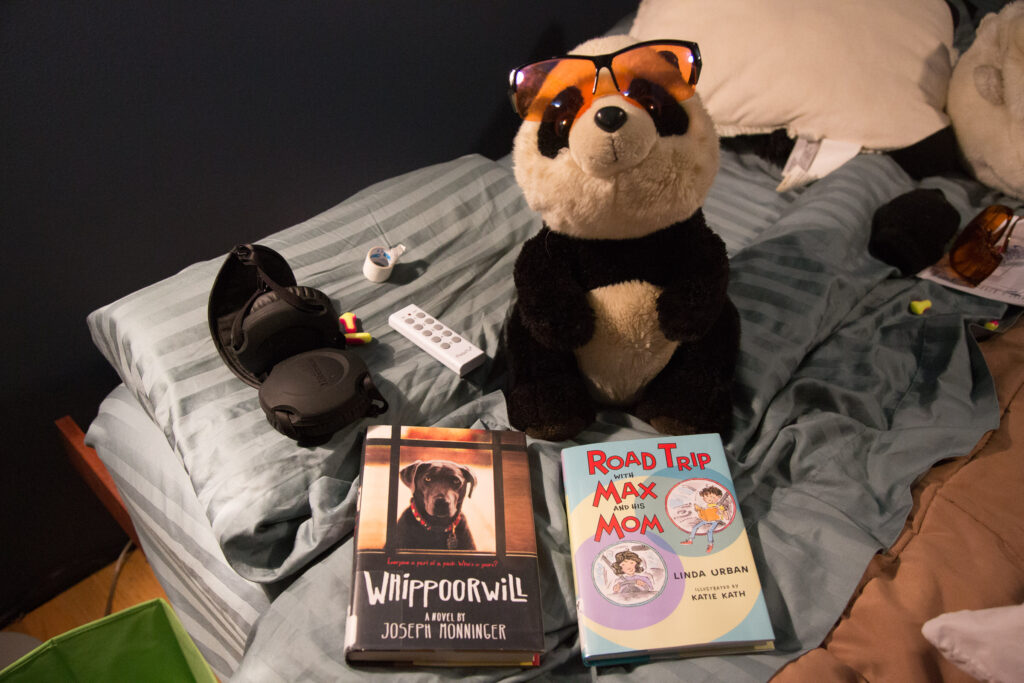
Create a Better Bedtime Routine: Break the Screen Habit
Several clients are trying to increase energy and enhance productivity by building better sleep habits. Two things they share are 1) daytime exhaustion and 2) excessive evening screen time. I get it. We live in fearful times. Many folks scroll to relax, chill, fill time, entertain, cope, or numb. Remember that all habits originated to fulfill a distinct purpose. But when your habits interfere with the rest of your life, it’s time to create new ones. How? Here are some tips for creating a better bedtime routine without screens.

Screentime Does Not Fit in a Bedtime Routine
Picture this: you climb into bed, phone in hand, and tell yourself you’ll check on one more thing… and one more… and suddenly, hours have disappeared. Nighttime scrolling can feel like a harmless wind-down routine, but it’s working against us.
Why?
- Blue light disrupts melatonin production, making it harder to fall asleep.
- Doomscrolling and information overload keep the brain wired, preventing relaxation.
- Social media or news can trigger stress, anger, or comparison, leading to restless thoughts.
- The endless loop of short-form content makes the brain crave more, delaying bedtime even further.

The result? Fitful sleep, nightmares, insomnia, groggy mornings, and an ingrained habit that’s difficult to break.
Take One Step Toward Change
Breaking any habit starts with awareness. If you’ve noticed screen time creeping into your bedtime routine and you’re constantly exhausted, we have good news: You can change! Identify your stage of change here to learn whether you’re ready, willing, and able to change.
How confident are you that you can make that change consistently on a scale from 1 (never going to happen) to 10 (I got this)? If you have a confidence rating of 6, try adjusting your goal until you rate yourself an 8, 9, or 10. We’re going for small, consistent wins. Just as your habit wasn’t created in a day, you won’t change it in a day. But by starting on a new path, you can make a difference.
Try one of these for your bedtime routine:
Set new limits. Try posting reminders to turn off screens 30 minutes before your desired bedtime. Share your plan with someone.
Start small. Choose one or two nights a week to replace scrolling with another activity.

Make it hard to grab the phone. Charge it in another room. Banish screens from your bedroom. Use a bedtime mode that locks certain problematic apps. Replace your Kindle with an actual book. And every time you make a different choice, celebrate, perhaps with a sticker on a calendar or placing a dollar bill in a jar for something you want to purchase for yourself.
Have a transition plan. Decide what to do instead of using your screen. Set yourself up for success by creating an environment for rest. If you’re stressed without an alternative, you’ll return to the self-soothing option out of default. This further entrenches the habit.

Create a sleep schedule and stick to it. If you consistently get less than 6 hours of quality sleep per night, try adding 30 minutes to your planned bedtime every two weeks until you reach 6. See how you feel. Good sleep habits are a skill you can build until you get to the target of 7-8 hours of sleep per night. Don’t give up!
What Might Fit in a Bedtime Routine
Once you feel ready, willing, and able to make a change, try replacing scrolling and evening screen time with one of these healthier alternatives.
- Read a physical book. Paper books engage the mind without any blue light interference. Fiction or calming non-fiction can be helpful. Choose something entertaining, light, or peaceful. Horror, politics, and newspapers or magazines probably will not be soothing.

2. Listen to an audiobook or podcast. Aim for something slow-paced, gentle storytelling, or guided relaxation rather than stimulating content.
3. Listen to calming music or nature sounds. White noise, classical music, or lullabies (I love the sound of piano music with rain in the background) can help your brain relax.
4. Practice journaling or capturing acts of kindness or moments of gratitude. Reflect on the day’s wins. Clear your “worry wheel” mind by listing the most important thing you must do the next day. Identify three things you’re grateful for. All of these tips can serve you well in a bedtime routine.

5. Engage in light creative activities. Color. Draw. Paint. Knit. Do a puzzle to keep your hands busy without screen stimulation.
Physical Cues that Can Help Your Bedtime Routine
Other things that can help you establish a supportive, restful sleep routine are these:
- Stretch or do gentle mobility work. Try some yoga or simple stretches. Take a meditative walk. Do some foam rolling. These suggestions help you transition into a relaxed state.
- Try a breathing exercise or meditation. Box breathing (4-4-4-4) or guided meditation can help calm the nervous system. If you like to use an app (outside the bedroom, please!) try Insight Timer or Calm to provide more structured guidance.
- Dim the lights and use a salt lamp or candle. Creating a warm, low-light environment encourages melatonin production and helps cue sleep.
- Sip a warm, caffeine-free drink. Herbal tea (such as chamomile or peppermint) or warm milk with cinnamon can signal the body that it’s time to wind down.

Takeaway: Getting Restful Sleep Is a Skill
Screens are ubiquitous these days. The more advanced technology becomes, the more automated everything will be.
But WE control when, how much, how often, and how long we use screens. The good news is that getting restful sleep is a skill that can be cultivated with consistent practice. You were taught at a young age how to brush your teeth. It’s automatic. It’s the same with cooking breakfast or driving a car, although both require more steps.
Were you ever taught how to create an effective bedtime routine? I’m guessing most adults would say NO.
Solid, restful sleep can be cultivated. You can learn how to improve your sleep habits. If you want to break a late-night screen habit, try one of the tips above. Better yet, experiment to find your unique solution.
I’m available to help if you need collaborative support.


